
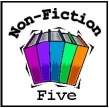 I’m just squeaking in under the wire for my July selection in the Non-Fiction Five Challenge – The Cincinnati Arch: Learning from Nature in the City
I’m just squeaking in under the wire for my July selection in the Non-Fiction Five Challenge – The Cincinnati Arch: Learning from Nature in the City . [For this reading challenge I picked non-fiction titles that are outside the usual scope of my reading and of this website.]
. [For this reading challenge I picked non-fiction titles that are outside the usual scope of my reading and of this website.]
This book turned out to be not so much a natural history of Cincinnati, but more of a meditation on overcoming the apparent dichotomy between wilderness and city. The author had identified himself as a wilderness lover, so at first he sees his move to the city as a kind of exile. (The first chapter is titled “The Road of Exile.”) Eventually he comes to see the natural world as a continuum that includes the city, and he arrives at a ‘practice of the wild’ (Gary Snyder’s term) that can embrace all aspects of experience.
Here is a ‘mind-related’ excerpt:
…the house feels like a spacesuit, a diver’s mask, or a suit of armor, a fabricated refuge that keeps my body comfortable so that my mind can work on matters of its choosing. Without the house, the body’s needs would always be clamoring for attention: “Feed me!” “Keep me warm!” But with those needs taken care of by the house, the mind can go its own way, attentive to ideas and dreams. So the house represents a kind of refuge or escape from nature, which is construed as whatever exists outside the organism and, ipso facto, forces it to pay attention. The house allows the mind to pay attention to itself. (p. 56, emphasis mine)
On the practice of the wild:
Wild practice is first and foremost a local practice. You always have to do it right here. Wild practice has an aspect of attentiveness: learning the other creatures and their ways, keeping watch, waiting for things to emerge, learning to see the unseen. There is also an aspect of mindfulness, of repeated acts deliberately composed, of discipline projected over the long term. There is an aspect of relation: dancing with the wildness of others, participating in local flows of energy, nourishment, and information, all of which comprise what I call husbandry. There is an aspect of homage to one’s origins in landscapes of learning or transformation – call it pilgrimage – and an aspect of reflection and witness that preserves the land’s gifts by sharing them through stories. Five disciplines, in sum, are necessary: attentiveness, mindfulness, husbandry, pilgrimage, and witness. (p. 123)
He then goes on to talk about applying this practice at different levels of relationship – personal, community, and ecological.
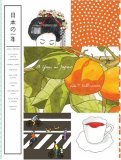
by Kate Williamson is the last book for the “Non-Fiction Five Challenge.”
 This is a beautifully drawn travel journal by an artist who spent a year living in Kyoto. I did not feel like I got much of a deeper acquaintance with Japanese culture, but the book was filled with the kind of observations that strike a foreigner traveling in a new land. The reader who has never traveled to Japan can get a sense of experiencing an unfamiliar culture through the author’s drawings and brief written descriptions. Not much about Japanese popular culture here, but there are notes about the food, festivals, street scenes and sights of Kyoto.
This is a beautifully drawn travel journal by an artist who spent a year living in Kyoto. I did not feel like I got much of a deeper acquaintance with Japanese culture, but the book was filled with the kind of observations that strike a foreigner traveling in a new land. The reader who has never traveled to Japan can get a sense of experiencing an unfamiliar culture through the author’s drawings and brief written descriptions. Not much about Japanese popular culture here, but there are notes about the food, festivals, street scenes and sights of Kyoto.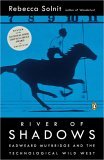


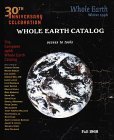

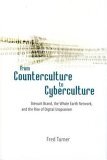 From Counterculture to Cyberculture
From Counterculture to Cyberculture

